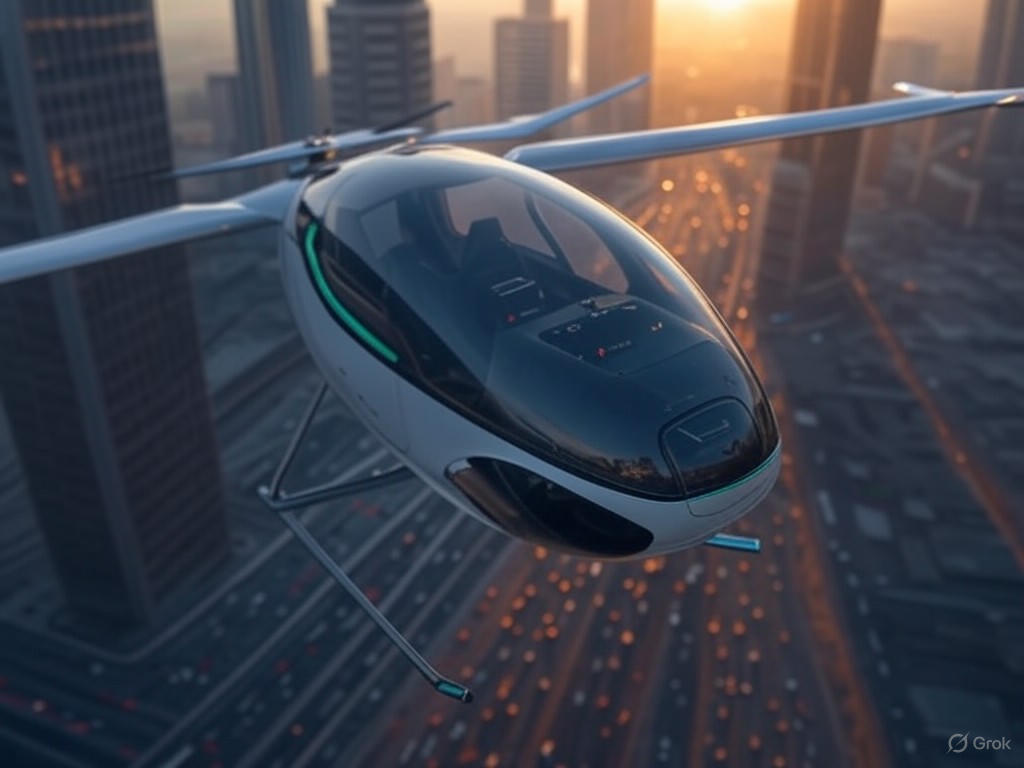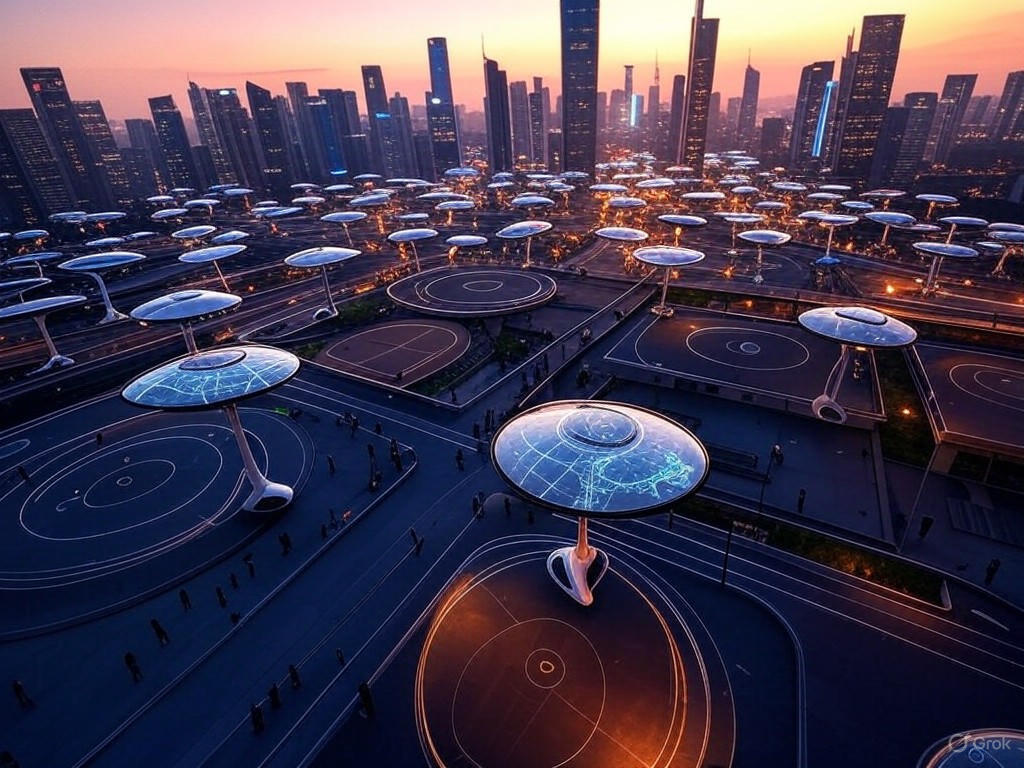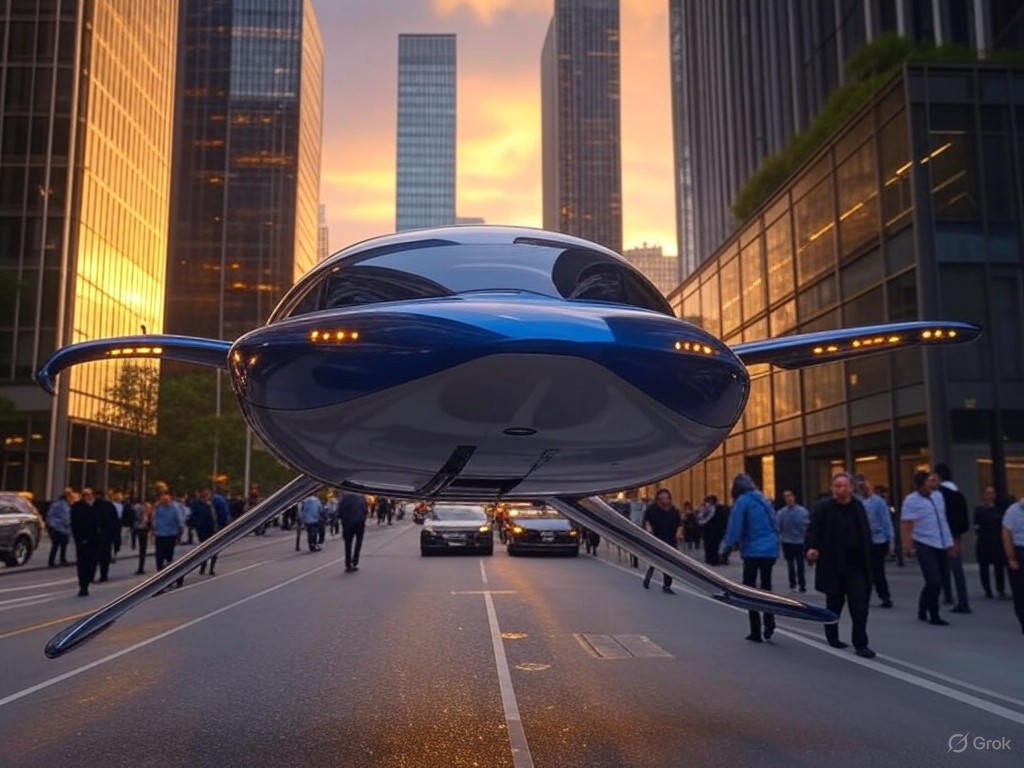Self-Flying Air Taxis: Urban Skies in 2025
In the bustling heart of a modern metropolis, imagine zipping above the gridlock—not in a clunky taxi, but in a sleek, electric-powered pod that pilots itself with the precision of a well-oiled machine. This isn't the stuff of science fiction; it's the imminent reality of autonomous air taxis, poised to redefine urban transportation by 2025. As a writer who's seen his share of technological marvels and bureaucratic blunders, I find it both exhilarating and exasperating how innovation often outpaces our readiness to embrace it. Today's focus is on the development of these self-flying wonders—air taxis that promise to ease traffic woes, boost economic efficiency, and enhance mobility in our ever-crowded cities. Yet, from a center-right vantage, their success will hinge on fostering free-market dynamics rather than succumbing to overzealous government intervention. Let's navigate this aerial frontier with a keen eye on technology, urban challenges, and the timeless value of individual enterprise.
The Allure of Autonomous Innovation
The concept of air taxis isn't new; visionaries have sketched flying cars since the early 20th century. But today's advancements in autonomous technology have turned sketches into prototypes, with companies like Joby Aviation and Lilium leading the charge. These vehicles, often electric vertical takeoff and landing (eVTOL) aircraft, are designed for short-haul urban flights, shuttling passengers from downtown helipads to suburban enclaves in minutes. By 2025, regulatory approvals and testing could make this a staple of city life, potentially slashing commute times and reducing reliance on congested roadways.
What makes this technology particularly compelling is its alignment with free-market principles. In an era where entrepreneurship drives progress, air taxis represent a triumph of private innovation over public stagnation. Startups are pouring billions into research, drawing on advancements in artificial intelligence and sensor technology to ensure safe, autonomous operations. For instance, these vehicles use LiDAR and machine learning algorithms to navigate complex urban airspace, much like how self-driving cars have evolved on the ground. This market-driven approach not only spurs competition but also encourages efficiency, as companies vie to offer faster, cheaper, and greener options for urban mobility.
Yet, as with any technological leap, skepticism lingers. Critics point to potential disruptions, such as noise pollution or the risk of mid-air collisions, which could unsettle traditional community values. From a center-right perspective, these concerns are valid but should be addressed through voluntary standards and industry self-regulation rather than heavy-handed mandates. After all, the free market has a way of self-correcting; poor performers get weeded out, while successful models set the bar higher. As IEEE Spectrum notes in its analysis of eVTOL developments, "The key to scaling autonomous flight lies in fostering innovation without regulatory overreach."

"A Joby Aviation eVTOL prototype glides over a cityscape, illustrating the seamless integration of autonomous technology with urban environments."
Analyzing the Economic and Social Impacts
Delving deeper, the economic ramifications of air taxis could be transformative, particularly in revitalizing urban economies. By alleviating traffic congestion, these vehicles might unlock billions in productivity gains. A study by the Boston Consulting Group estimates that widespread adoption could reduce urban travel times by up to 30%, freeing up hours for work, family, or leisure—hallmarks of a society that values personal initiative over idle waiting. In cities like New York or Los Angeles, where commuters lose upwards of 100 hours annually to traffic, air taxis offer a free-market solution to a problem that government-funded infrastructure projects have only exacerbated with delays and cost overruns.
From a social standpoint, autonomous air taxis align with traditional values of accessibility and self-reliance. They could democratize mobility, providing options for the middle class without relying on taxpayer-subsidized public transit expansions. Imagine a small business owner in Chicago avoiding hours in rush-hour traffic to make a crucial client meeting; that's not just convenience, it's empowerment through technology. However, we must balance this optimism with pragmatic concerns. Safety remains paramount—after all, entrusting lives to algorithms isn't something to take lightly. Incidents like the 2023 software glitch in a prototype flight highlight the need for rigorous testing, but again, the market can handle this. Private insurers and certification bodies, rather than federal agencies, should lead the charge, ensuring accountability without stifling growth.
This perspective is echoed in economic analyses, such as those from the Wall Street Journal, which argues that "Autonomous air taxis could spur a new era of economic mobility, but only if regulators step aside and let the market innovate." By emphasizing limited government involvement, we preserve the entrepreneurial spirit that built America, avoiding the pitfalls of overregulation that have bogged down other sectors, like electric vehicle mandates.
Of course, not all is smooth sailing. Urban integration poses challenges, from airspace management to equitable access. In densely populated areas, coordinating flights could resemble a high-stakes game of aerial chess, potentially exacerbating inequalities if only affluent neighborhoods gain access. A center-right approach advocates for market-based solutions, such as dynamic pricing and private-public partnerships that encourage broader adoption without mandating affordability quotas. As TechCrunch reports in its coverage of industry trials, "The future of urban mobility depends on balancing technological advancements with consumer demand, not government dictates."
Evidence from the Ground Up: Real-World Progress and Cautionary Tales
To ground this discussion in evidence, let's examine key developments. In 2023, Joby Aviation completed successful test flights in Ohio, demonstrating autonomous capabilities that could handle urban environments with minimal human oversight. These tests, backed by private investment exceeding $1 billion, underscore the viability of air taxis as a commercial product. Similarly, Lilium's all-electric designs have shown promise in European trials, with projections for U.S. deployment by 2025. Data from the Federal Aviation Administration (FAA) indicates that autonomous systems could reduce accident rates by 90% compared to traditional piloted aircraft, thanks to AI's unflagging attention and data-driven decision-making.
Yet, we can't ignore the hurdles. Economic analyses from sources like the Heritage Foundation highlight how excessive regulation could delay rollout, potentially costing the economy $100 billion in lost opportunities by 2030. This isn't mere speculation; California's stringent autonomous vehicle laws have already slowed innovation in ground transport, a cautionary tale for aerial counterparts. By advocating for streamlined regulations—perhaps through industry-led safety standards—we ensure that technology serves the public without becoming entangled in bureaucratic red tape.

"A conceptual visualization of an air taxi network over a major city, highlighting routes that could alleviate ground-level congestion."
In contrast, cities like Dallas and Los Angeles are piloting public-private initiatives that exemplify the center-right ideal: government as a facilitator, not a controller. These efforts focus on designating low-altitude corridors for air taxis, allowing market forces to dictate expansion.
Charting a Balanced Path Forward
As we peer into the horizon of 2025, the advent of autonomous air taxis beckons a future where urban mobility is efficient, innovative, and accessible. From a center-right lens, their potential shines brightest when unencumbered by excessive intervention, allowing free markets to reward ingenuity and traditional values like safety and reliability to guide development. We've seen how government overreach can stifle progress, from ethanol subsidies to green energy mandates, and we ought to learn from those missteps.
Ultimately, the sky's the limit for air taxis, but only if we prioritize individual enterprise over collective control. By fostering an environment where technology and tradition coexist—through voluntary standards, competitive markets, and prudent oversight—we can transform urban landscapes without losing sight of what makes America great: the freedom to innovate and the wisdom to do so responsibly. As we embrace this new era, let's remember that the best revolutions aren't handed down from on high; they're built from the ground up, one entrepreneurial flight at a time.

